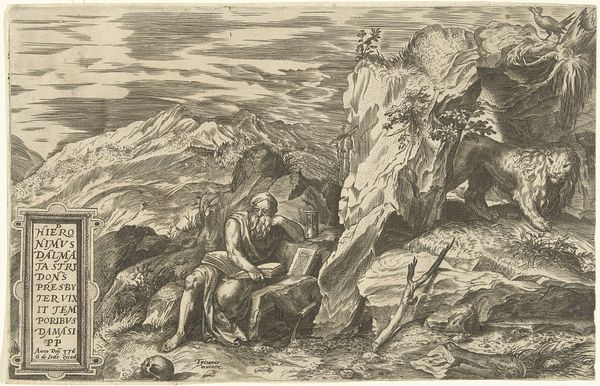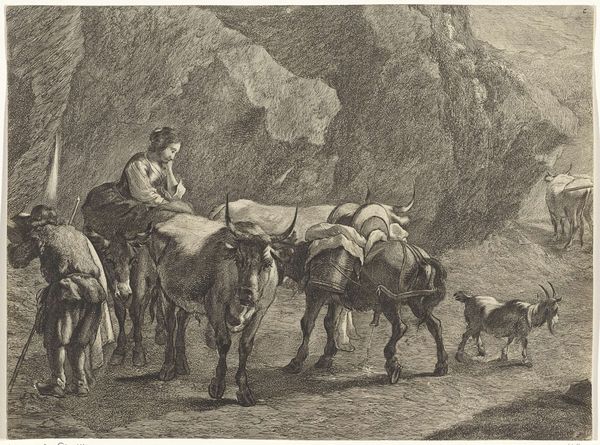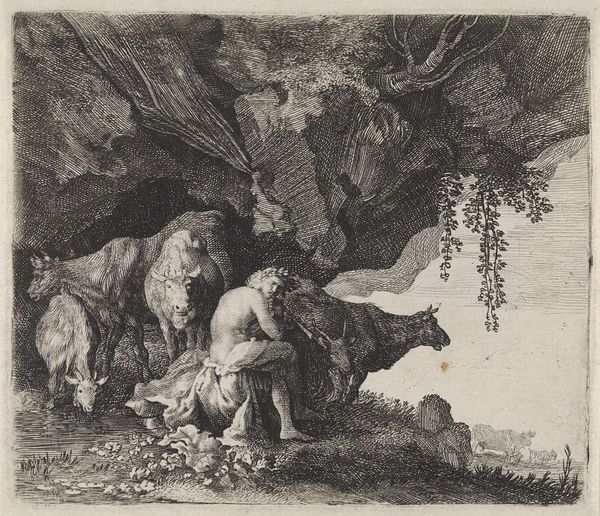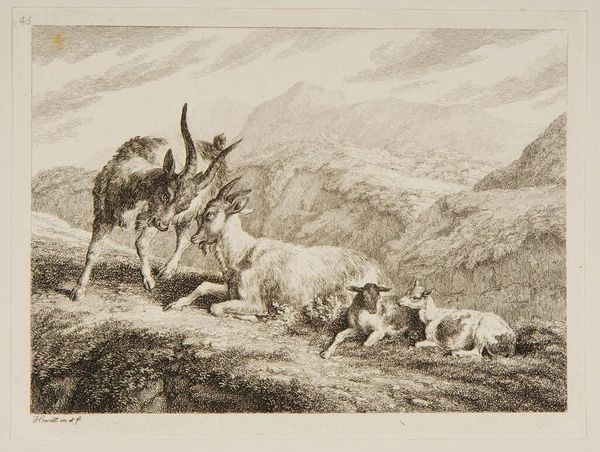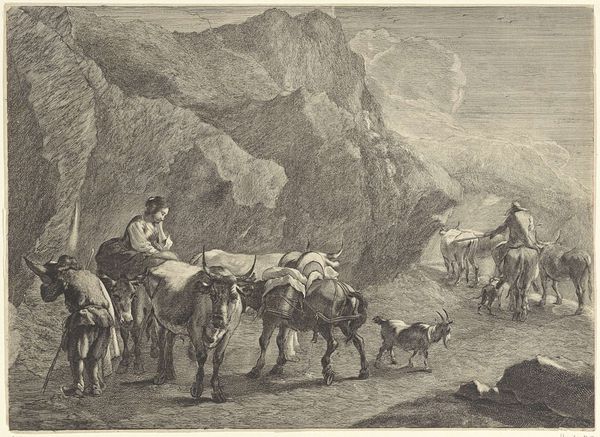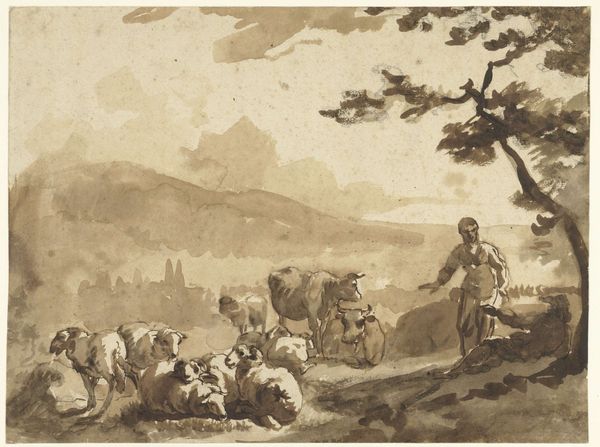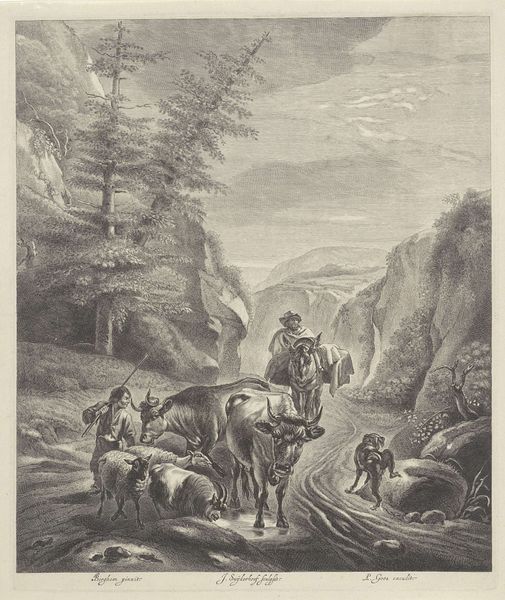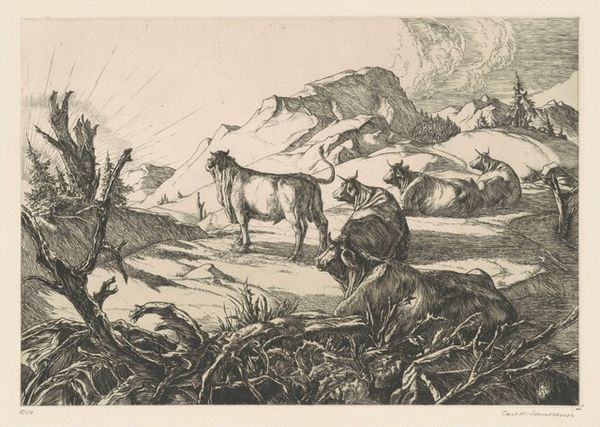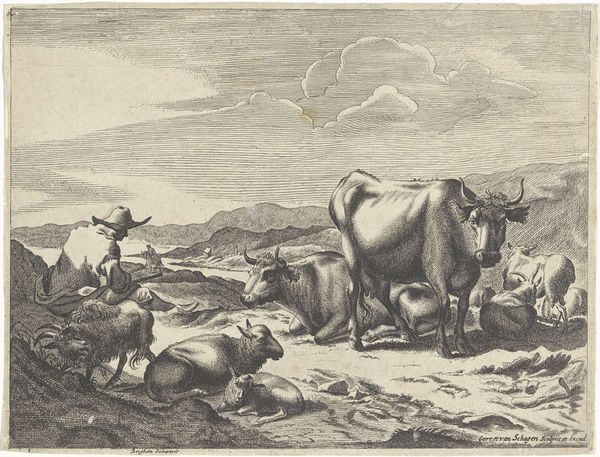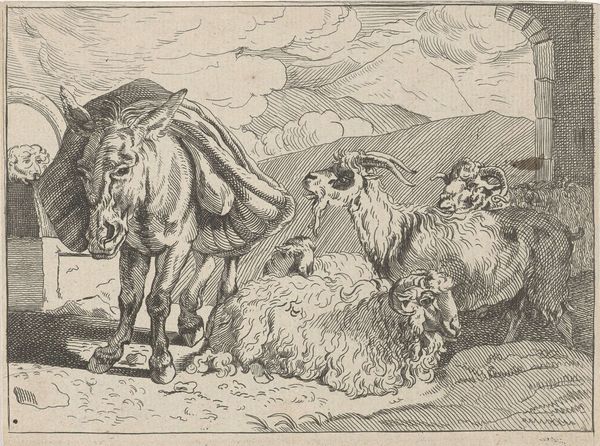
print, engraving
# print
#
landscape
#
figuration
#
genre-painting
#
engraving
#
realism
Dimensions: height 249 mm, width 352 mm
Copyright: Rijks Museum: Open Domain
Curator: This is an engraving titled "Landschap met een herderin die een geit melkt," or "Landscape with a Shepherdess Milking a Goat," made sometime between 1650 and 1800. Editor: There's a stark beauty to it, almost melancholic. The grey scale lends a certain austerity to the scene, doesn't it? I mean, it presents a rather bucolic trope. Curator: Certainly. The depiction is part of a very long tradition linking women and nature, representing fertility and nurture. The milking goat, in particular, holds powerful symbolic weight throughout art history. Editor: How so? Curator: It references classical mythology—Amalthea, whose goat milk nourished Zeus, king of the gods, represents this concept. And later we see Mary as lactans in a new symbolic context. Editor: Right, turning towards a very different social commentary, I read something quite different in this image. A solitary female figure engaged in labor… it highlights, perhaps unintentionally, the sheer, unrelenting physicality of women's lives through most of history. Curator: It’s difficult not to see gendered labor as part of its iconography, considering the artist and original audience were most likely steeped in the cultural expectations of this role for women. There are more generalized symbols that seem very pointed here: sheep resting in contentment versus the ass, or donkey, also stands silently burdened behind the woman in labor, seemingly trapped as beasts of burden. Editor: I wonder if this image held a particular resonance at a time when social roles were much more clearly defined along gender lines, if we were able to measure audience reaction. It's a moment captured that speaks of perseverance and survival. Curator: A world presented by someone unnamed...I think, too, there is a certain timelessness here, with that stark image offering a point for both of us to interpret across centuries, speaking differently, and connecting deeply nonetheless. Editor: Indeed. I'm struck now by how its simplicity contains multitudes, all from the act of milking a goat.
Comments
No comments
Be the first to comment and join the conversation on the ultimate creative platform.
